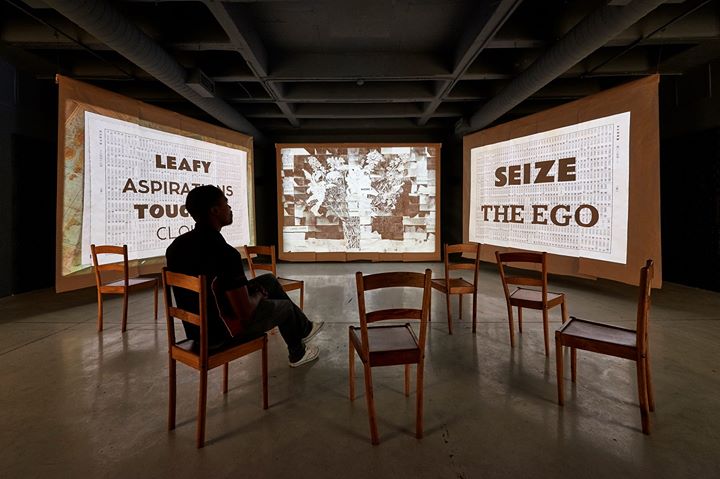The Fruitmarket Gallery, Edinburgh, United Kingdom
19 Nov 2016 - 19 Feb 2017

View of William Kentridge, Notes Towards a Model Opera, 2015. Courtesy the artist and Marian Goodman Gallery, New York; Paris; London; Goodman Gallery, Johannesburg, Cape Town; and Galleria Lia Rumma, Naples, Milan.
This exhibition brings together the work of two of South Africa’s foremost visual artists, William Kentridge and Vivienne Koorland. Kentridge and Koorland come from the same generation of South African artists.
Born in the 1950s, they first met as university students in the mid-1970s and have been talking about art ever since. This exhibition foregrounds a friendship of 40 years and a dialogue which has been mutually enriching as the practice of each has informed that of the other.
The selection of works is designed to bring out the formal and thematic links between their practices. Amongst Koorland’s works we will show are her monumental map paintings, which plot events and places in an imaginary and haptic cartography. Located in South Africa, and charting migrations and deportations of workers/settlers or mapping historical instances and politically charged locations, they use found icons and signposts to signal the relations between places, pasts and their material/symbolic inscription. Maps feature too in Kentridge’s animated films, such as Other Faces (2011), where the façade and the ground of the city are alternately signaled through sketched shop-fronts, landscapes and buildings as well as diagrammatic ground plans that form the fulcrum of a located but freely interpreted backdrop for personal reminiscences and politically-inflected reflections.
Drawing is at the heart of both practices. And an expanded sense of the linear—whether stitched, sketched, scrawled or scripted—is central to both artist’s work. But for each, line is freighted with historical self-consciousness, not only of previous “styles” (expressive versus industrial, descriptive versus conceptual, learned versus intuitive) but also of past technologies. This is already evident in Kentridge’s early Drawings for Projection, such as Felix in Exile and is still evident in the later Other Faces. Koorland revels in the hand-made and the quoted mark. In a painting like Angola (2014) registering both the African country and the infamous US prison, a recycled drawing of the watch-tower is transcribed and enlarged onto a stitched and stained canvas.
For both artists African histories intersect and collide with European/North American references. Kentridge plays with the expressive and descriptive potential of line, moving from three-dimensional illusionistic portrayal to flat, schematic inscription as his narrative both forms and dissolves. Words intersect with lines, creating loaded caesuras of sense amidst the pictorial signifiers of place, conflict, atmosphere. For Koorland, scripts can constitute pictures in their entirety and paintings like The Divide purport to do no more than to transcribe a Tagore story into writing that is simultaneously legible and opaque.
For both artists questions of reading and looking are posed by the inclusion of text. The bookish (its associations with the learned and schooled as well as the reference to books as traditional bearer and bringer of words) features literally in both practices. Koorland has been painting on old book pages since the 1980s as works like Vive Maman attest and Kentridge has used books as the ground of his work since the late 90s. More recently he has explored the effects of the filmed “flip-book” where reading and looking, in time and on screen, become part of the point of the work. We will show a range of these produced between 2011–14. The synergies between these diverse but related practices is compelling. It will allow us to look at each artist afresh in the belief that the specificity of each will become more visible, while the historical/cultural links between them are revealed.
We are very proud of the book we have produced to accompany this exhibition. An insightful essay from Tamar Garb sets out the rationale for bringing the work of Kentridge and Koorland together, while responses from Briony Fer, Joseph Leo Koerner, Ed Krcma and Griselda Pollock shed new light on the work of both artists, alongside a new conversation between Garb and the artists. Buy now.
.
Artists’ talk: November 18, 5–6pm,
William Kentridge and Vivienne Koorland in conversation with exhibition curator, Tamar Garb
.